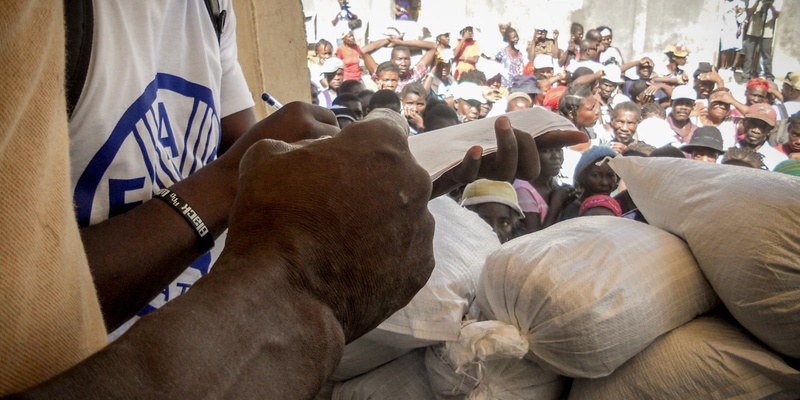Keeping food secure and free from pests: Tackling pests in food aid
Posted on Tue, 16 Mar 2021, 16:11

©FAO/ Justine Texier
Rome, 16 March 2021. It is known that disasters impacts in agriculture threaten all three pillars of sustainable development: social, environmental, economic. Countries have faced challenges to manage pest risk effectively during an emergency situation, for example receiving aid from other countries when natural disasters happened. It has been recognized that the provision of aid supplies could bring pests which causes long-term impacts on the economy, environment and communities.
Why manage pest risk in food and other aid?
The need to manage pest risk effectively becomes even more crucial when it comes to countries experiencing a humanitarian disaster. Once invasive pests and diseases are established in a new area, their eradication may be extremely difficult and in most cases, it entails additional resources and efforts for managing the pest outbreak. When this occurs, the consequences for countries and communities already devastated by human-induced or natural disasters may be catastrophic. In fact, if not timely managed, the entry of plant pests may further affect their economy, environment and livelihood long after recovery from the emergency.
A global recommendation to tackle pests in food aid to strengthen long-term food security and to combat humanitarian crisis.
To address this issue, the fifteenth session of the Commission on Phytosanitary Measures (CPM-15) adopted a new CPM recommendation on “Safe provision of food and other humanitarian aid to prevent the introduction of plant pests during an emergency situation” . This recommendation was prepared to provide clear guidance on the effective management of pest risk associated with commonly provided food and other humanitarian aid following two consultations in 2019 and 2020. The provision of food and other humanitarian aid assists regions or countries that are at risk of food and economic insecurity as a result of conflict, crop failures, and natural disasters. The recommendation applies the principle of phytosanitary preparedness and response to the provision of urgent disaster-relief assistance and encourages recipient and exporting countries to develop adequate response plans and use guidance available in adopted standards.
Contracting parties (both recipient and donor), government agencies and non-governmental organizations involved in humanitarian aid activities are invited to consider this recommendation in the provision of aid supplies and are encouraged to establish new mechanisms to engage aid agencies, exporters, importers, regulators and other relevant stakeholders and raise awareness of the pest risk associated with food and other aid materials. It should be noted that this recommendation covers a broad range of aid such as food, water, building materials, support personnel, vehicles and machinery.
While natural disasters cannot be foreseen, we believe this will contribute to keep food security, and free from pests, even if emergency situation. The recommendation includes how to develop and maintain an emergency response plan and undertake preparedness activities to reduce the risk of introduction of regulated pests, using the guidance available in adopted International Standards for Phytosanitary Measures (ISPMs) (e.g. ISPM 32 Categorization of commodities according to their pest risk) whilst partnering with relevant stakeholders (e.g. aid and donor agencies) to better plan for the effective operation of emergency food assistance programmes.
The National Plant Protection Organizations (NPPOs) are invited to disseminate this CPM recommendation1 to relevant stakeholders in their territory to ensure the aid activities around the world are undertaken following this CPM recommendation to keep food secure and free from pests.
1. CPM recommendations are available at: https://www.ippc.int/en/core-activities/governance/cpm/cpm-recommendations-1/cpm-recommendations/ (the newly adopted will soon be formatted and available on this page)

